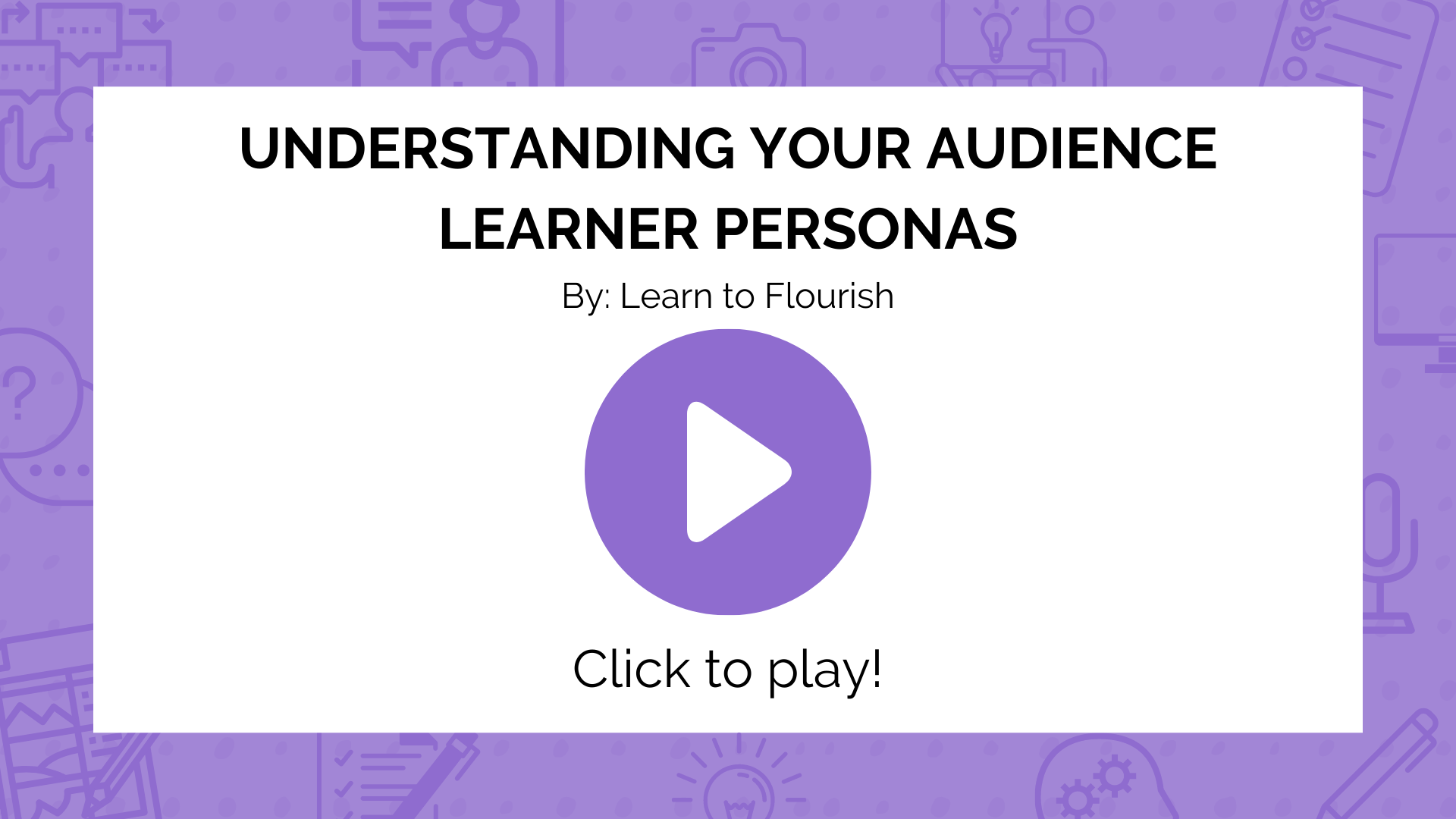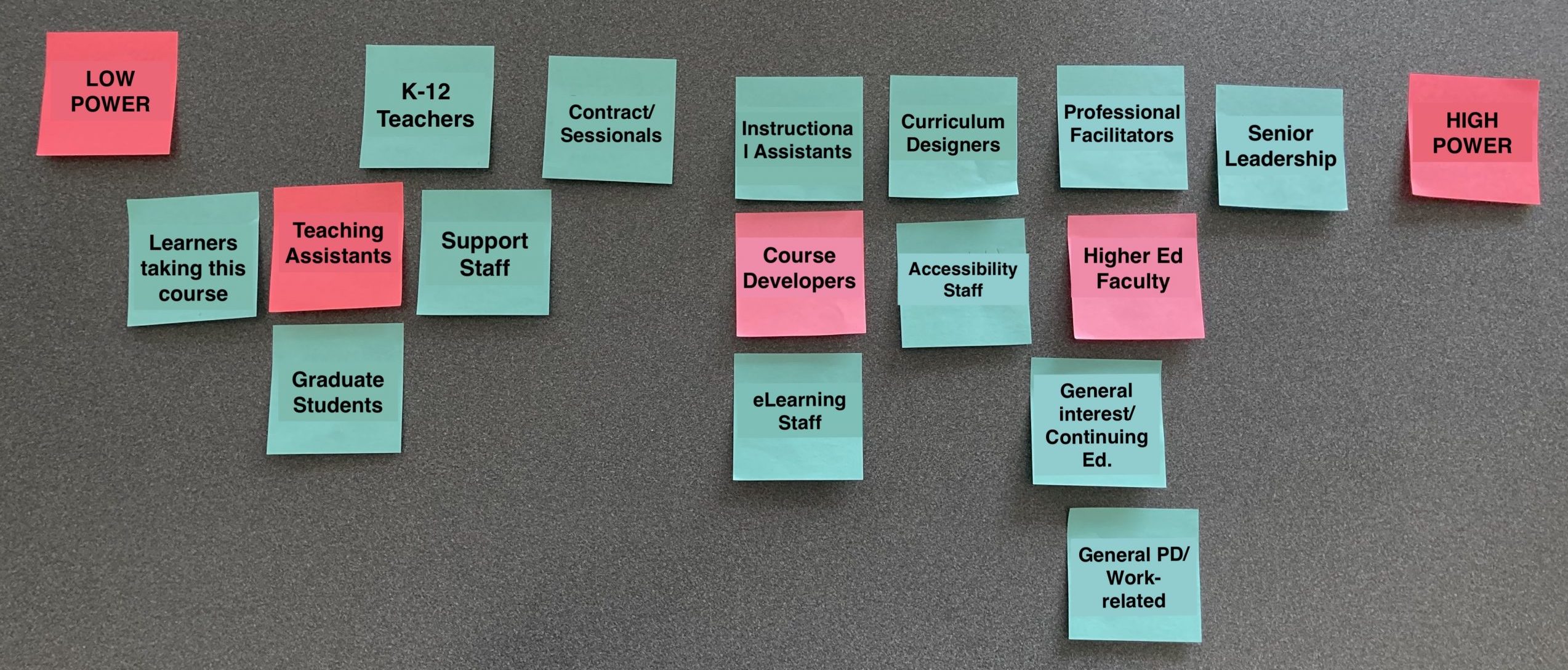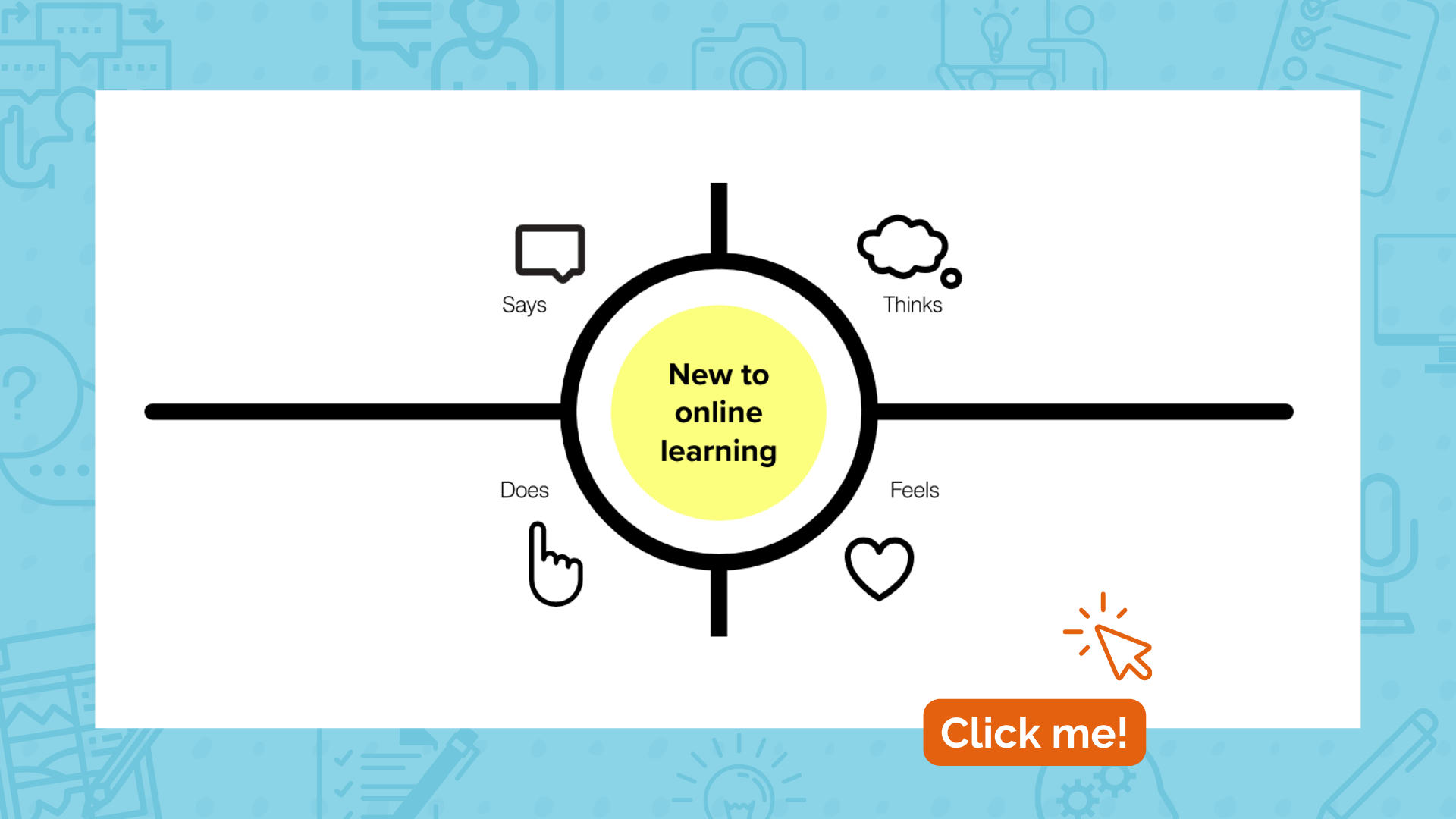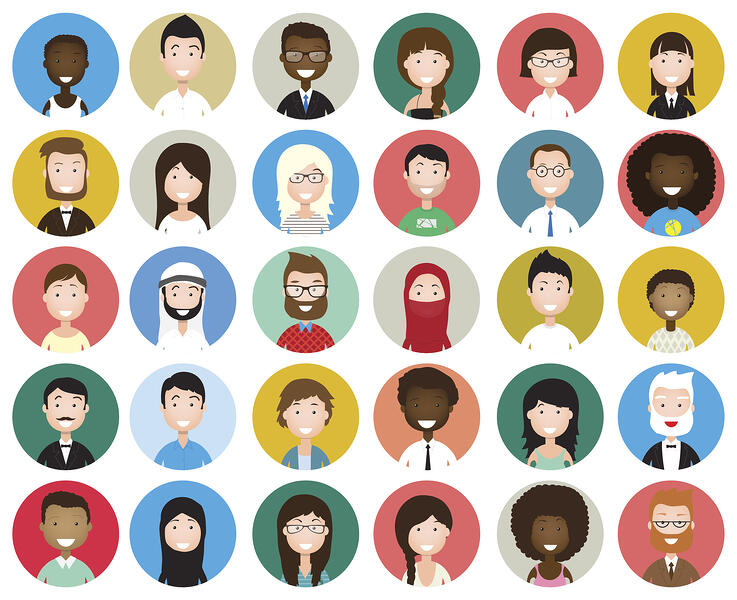6 Learner Personas: Understanding Audience Demographics, Needs, and Expectations
Irina Ghilic
In this chapter, you will find…
- How to develop content that resonates with your learners, to make the biggest impact on their performance.
- You will use your crafted personas as guideposts to reference continually as you are designing a learning experience.
- Working with learner personas will lead to creating more specialized and engaging content that is relevant to your audience!
Why are Learner Personas an important part of Digital Experience Design?
Full video with transcript [opens in new tab]
Think of the last time a friend, colleague, or even an advertisement said something that personally connected with you. Now imagine your learners feeling a similar connection to the content you are presenting. Learner personas are a powerful tool when it comes to engaging with your audience, and without a learner persona, you will end up with generalized content that is neither engaging nor relevant for your audience. The practice of building our personas begins in the Empathy and Define Steps of the “Understand” Phase of the Design Thinking process. If you missed Chapter 5 on the Digital Experience Design Process [opens in new tab], you can take a quick 10-minute detour to learn (or review) the main stepsin this process.
What is a Learner Persona?

Coming to us from the fields of User Experience Design and Marketing, a persona is a fictional profile that has been developed for authenticity and clarity around who the target audience is for a product, service, or ad campaign. Similarly, a learner persona reflects the audience we are targeting when designing a learning experience.
As a prototype, the learner persona includes common characteristics, needs, challenges, and desired behavior that will inform the design of the learning they will participate in.
Explore Multiple Audiences
There is usually more than one type of audience for a particular learning experience, and this reality makes creating these personas crucial if you intend to customize the experience for your learners. Will your course make a group of learners feel excluded? What if your audience has a mix of cohorts? For example, how might you tackle strategies for adult learners vs. Generation Z learners?
How might you create a Learner Persona?
There are a few considerations when starting to work on Persona development.
- Gather information from the actual people you intend to design for by having interviews and chats with them, or by looking at recent learning experience feedback results;
- Include conversations with anyone else who might be a stakeholder in the learning experience you are designing. If you are an instructor about to teach a course, connect with the staff who have multiple touchpoints with your learners. What kind of insights might you gain about your learners from the learner experience support team?
- Think broadly and openly about your learners, and refuse to be sidetracked by stereotypes, personal biases, and projected ideas and desires.
Reflecting on Experiences: An International Perspective
Start with Empathy
When working on Learner Personas, you are still in the Empathize and Define steps of the Design Thinking process. You are trying to UNDERSTAND the multiple facets of your experience, by starting with your audience’s needs and expectations.

Your Turn: Brainstorm your Audience! [5-10 minutes]
Broaden your Brainstorming
Below you’ll find two examples of learning groups that you might want to consider in your next LXD ideation!
- Indigenous Learners [opens in new tab]: want supportive learning environments, Indigenous curriculum and perspectives represented online classrooms, interaction with professors and peers, and opportunities for project-based learning.
- Undergraduates vs. Post-graduates [opens in new tab]: what’s the difference?
NOTE: Think broadly and openly about your learners. Challenge yourself when defining your Learner Personas!
Your Turn: Defining your Audience Exercise [20-30 minutes]
If you’ve already jotted down some thoughts in your Brainstorm Your Audience exercise earlier in this chapter, you already have a great foundation for this next exercise. This 20-30 minute experience is best done with others, so you can really take your brainstorming to the next level. Are you ready? Set? Define your Audience!
—Exercise adapted from Design Thinking for Educators.
—Click in the BOTTOM-RIGHT corner of the window above to view in fullscreen.
Designer’s Corner: A look behind the scenes
If you have seen our Introduction [opens in new tab] to this book, you know we also applied the principles we are describing to the design of this learning experience! We engaged in the exercise above, as a team, and tried to define our audience and learner personas.
Our persona journey was not easy; as an asynchronous Open Educational Resource, our learner persona has a broad range of backgrounds, interests, and knowledge! However, just being aware of that fact helped us design book elements that were not included in the original proposal, like the “Your Turn, “Honing your Habits”, “Community Board”, and “Level Up” section in Chapter Takeaways Resources.
Designer’s Tip: Keep personas visible!
Keep the mapped out Learner Persona(s) in a visible place, for as long as you are designing and iterating your learning experience! Revisit this map over the course of your project and ask yourself:
- Are you still designing for the same personas?
- Has anything changed? How/why?
- How might you account for changes?
- How is your experience still on track to connect with your learners?
1. A broad view of main Stakeholders

We started by jotting down all of the audience members we could think of for this content. As we looked at all of the options, we saw natural categories starting to form:
- Instructors
- Students
- Staff
- Broader Population
2. The Fans and the Skeptics
We rearranged the sticky notes, as instructed in the exercise above, from our skeptics to our possible fans.

After seeing this, the team got a new idea, not included in the original exercise. We wondered:
We decided to add another category to rearrange the sticky notes: Low to High Power.
3. From Low to High power

After rearranging according to “power”, it was interesting to note that those who might be more skeptical of the Digital Experience Design process also might have more power in terms of implementing large-scale changes and having curriculum design freedom. Our assumed bigger fans, like teaching assistants, support staff, and instructional assistants, don’t always have a say in the first few phases of the learning experience design process. With our personas in mind, we aimed to develop templates and resources that could be used in a broad range of activities, and implemented in small steps.
No matter your administrative power, you can focus on your goals, assess what you already have, design with accessibility and inclusivity in mind, and revise/reflect on your process with each new learning experience.
NOTE: The Digital Experience Design process can start with one presentation, one video, one tool selection, or one learning outcome.
COMMUNITY MURAL BOARD: Empathy Mapping! [5-10 minutes]
To share some ideas within this community, please go to our Digital Experience Design Module 2: Empathy Maps for Learners [opens in new tab]. For this activity, you do not need to have a MURAL account, so please take 5-10 minutes to explore the following scenario:
- You are building out an Empathy Map for learners who are new to online learning. Maybe they’ve been out of school for a while, or this is their first time encountering a mostly online learning experience. What might they say, think, do, and feel?
- Add your ideas to at least one of the sticky notes in the MURAL board, and keep your focus on the learner by putting yourself in their shoes.
Are you ready to think about and share ideas with your community? Visit the Digital Experience Design Module 2: Empathy Maps for Learners [opens in new tab] or click the preview image below!

NOTE: Empathy Maps reflect an aggregation of multiple learners!

Honing your Habits: Praise Empathy in Others
Empathy is a skill we can practice, and just like how we compliment people on their clothing choices, we can hone the habit to acknowledge empathetic behaviour when we see it.
Take a moment in your meetings or interactions this week to recognize whenever someone helps others achieve their goals.
Dr. Zaki points out in 5 exercises to help you build more empathy [opens in new tab] how a lot of our attention tends to go towards the loudest voices, which are not necessarily the kindest voices”. “When we notice the good around us, it balances our attention”.
Chapter Takeaways and Further Resources
—Click in the BOTTOM-RIGHT corner of the window above to view in fullscreen.
Conduct research to develop an understanding of your learners.
Combine all your research and observe where your learners’ problems exist.

